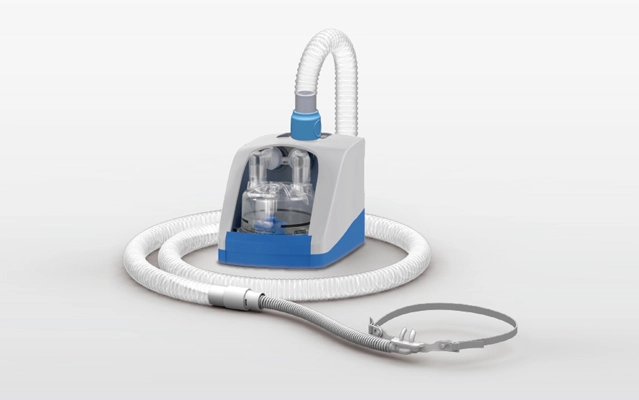Respiratory system diseases, as a common health issue, significantly impact the quality of life for affected patients. With the continuous advancement of medical technology, portable end-tidal CO2 monitoring has emerged as a novel means of monitoring, bringing numerous benefits to patients with respiratory system diseases. This article explores the advantages of using portable end-tidal CO2 monitoring devices from four perspectives.
Real-time Monitoring of Health Conditions and Timely Adjustment of Treatment Plans
Portable end-tidal CO2 monitoring devices can provide real-time and accurate monitoring of a patient's end-tidal CO2 concentration, reflecting their respiratory function and metabolic status. For patients with respiratory system diseases, this real-time monitoring helps physicians promptly understand changes in the patient's condition, enabling targeted adjustments to the treatment plan. By making timely adjustments to the treatment plan, better control of the condition can be achieved, reducing the occurrence of complications and improving treatment outcomes for patients.
Increased Patient Comfort and Reduced Psychological Burden
Traditional methods of monitoring respiratory system diseases often require patients to maintain a fixed position for extended periods or undergo cumbersome examinations, causing discomfort and psychological stress. In contrast, portable end-tidal CO2 monitoring devices are lightweight and easy to operate, allowing patients to monitor their condition anytime, anywhere, without the need for prolonged positioning or cumbersome examinations. This monitoring method not only improves patient comfort but also helps alleviate psychological burdens, encouraging patients to actively cooperate with their treatment.
Facilitation of Patient Self-management and Improved Quality of Life
With the use of portable end-tidal CO2 monitoring devices, patients can monitor their respiratory function in daily life, enabling better self-management. Based on monitoring results, patients can timely adjust their daily routines, diet, and other lifestyle habits to alleviate their condition and improve their quality of life. Additionally, portable end-tidal CO2 monitoring facilitates effective communication between patients and healthcare providers, enabling physicians to more accurately understand the patient's condition and needs, leading to more personalized treatment plans.
Reduction of Medical Costs and Improved Efficiency in Medical Resource Utilization
The widespread use of portable end-tidal CO2 monitoring devices helps reduce medical costs for patients with respiratory system diseases. Due to the real-time monitoring and ease of operation, patients can conduct monitoring at home or in community healthcare settings, reducing the need for hospital visits and hospitalization durations, consequently lowering medical expenses. Furthermore, real-time monitoring and timely adjustment of treatment plans can effectively prevent the deterioration of the condition, reducing the occurrence of more serious medical issues and further lowering medical costs. Additionally, the application of portable end-tidal CO2 monitoring devices contributes to improved efficiency in the utilization of medical resources, ensuring a more rational distribution and use of healthcare resources.
In summary, the use of portable end-tidal CO2 monitoring devices brings many benefits to patients with respiratory system diseases. It enables real-time monitoring, adjustment of treatment plans, increased patient comfort and quality of life, reduced medical costs, and improved efficiency in medical resource utilization. Therefore, in future medical practices, active promotion and application of portable end-tidal CO2 monitoring technology should be encouraged to provide patients with respiratory system diseases with higher quality and more efficient healthcare services.
 English
English










